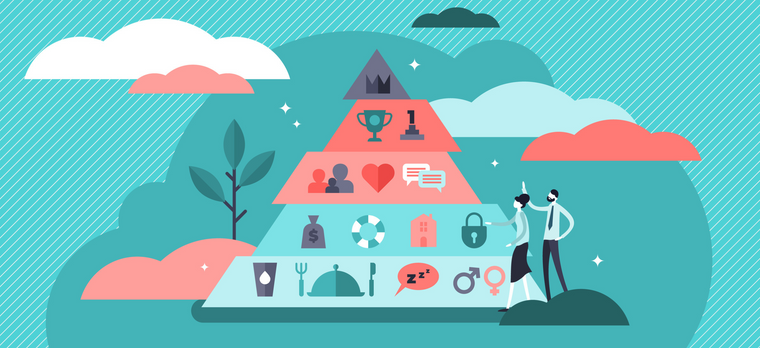The Science of Joy
Today's news is full of the cost-of-living crisis, climate-induced disasters, wars, corrupt politics, and global bad news. These constant negative influences have depleted the world's joy levels.

Today’s news is filled to the brim with the cost-of-living crisis, climate-induced natural disasters, wars, corrupt political movements, and bad news stories on a global scale. With constant negative influences from many sources in life, it’s easy to see how the world’s joy levels have become so depleted.
The Art and Science of Joy have made it their mission to inspire and empower people to cultivate more joy in their lives. Co-founders Andrew Cannon and Debby Schlesinger-Hellman created the Joy Movement, with the dual goals of using research tools to measure the power of joy to transform people’s lives and empowering people to harvest more joy through the Year of Joy online community.
The Year of Joy
The Year of Joy (YOJ) project is the culmination of a wide-scale collaboration between many different market research organisations, created and directed by Andrew and Debby. They have an online community with over 4,000 participants from many countries including Argentina, China, Ethiopia, USA, UK, Germany, Indonesia, and New Zealand, all searching to increase their levels of joy.
The Joy Barometer is at the centre of the project and is critical to achieving the goals set out. Participants in the community take the Joy Barometer survey and receive their personalised Joy Scorecard, which ranks the participants’ scores against each of the Joy Ingredients related to their wellbeing, belonging, positive impact, and fun; participants then use this to build their own unique recipe to follow when improving the amount of joy they experience in their lives.
In the online community platform, each member has access to inspiring content and practical tips to harvest more joy. Those members who really wish to take their joy to the next level can undertake 8-week activation programs developed to empower people to cultivate different Joy Superpowers, such as empathy, resilience and curiosity, to name but a few, all of which lead them to a more joy-filled life.
Through in-depth research, the team discovered that there are many components that contribute towards the feeling of joy. Many of these drivers, or ‘Joy Superpowers’, are the foundations of our sense of emotional, mental, physical and spiritual wellbeing; but our sense of belonging is also paramount, whether that is through family, friends, work/school or a broader community.
In a world of disconnection and bad news stories sparking distrust, this feeling of connection is becoming increasingly harder to come by. The YOJ project uses modern research methods including surveys, quick and open polls, forums, focus groups, and more to research, monitor and facilitate activities that foster engagement and help people spark joy through this sense of belonging.
The Current Impact and Insights
The YOJ project is now in its second year of running and it is a good time to reflect on what has been achieved so far. As noted at the beginning of this article, many people are struggling with their joy levels, and the YOJ community members are no different. In fact, primary research reported that they have slightly lower joy levels than the general public.
At the start of the project, as many as three-quarters of members struggled to feel joy, one-third very much so. When asked, two-thirds of members reported that being a YOJ community member had increased their feeling of joy, and the Joy Barometer data backs this up. Specifically, the program has helped those people with low Joy Scores harvest more joy in their lives, with such people seeing an average 20% uplift in their Joy Score after 6 to 12 months of participating in the community.
One respondent in particular spoke with us, disclosing just how she has increased her levels of joy and how much this has impacted her life in all areas. Em Allyn, a YOJ community participant and stand-up comedian from Los Angeles, USA mentioned she has learnt that the best way to increase her own level of joy is to share it with others; so, Em uses her skills from the community to “celebrate the good things in life, both big and small”, which has had a great impact on her joy levels in the past year.
Em found the YOJ project through active recruitment on another research platform, and so was familiar with research methods and projects from the participant’s point of view before this – however, Em commented on a “massively different feeling” in the YOJ project. Em says the YOJ is a “stress-free”, “authentic”, and “altruistic” experience, and that she “feels joy already simply by joining up and contributing [her] time to such a great project.” It’s not a traditional experience, where the research is conducted under the ulterior motive of driving profits or economic value to a business; the motive of the YOJ is to create universal value by discovering the ultimate path to increasing joy levels across the world.
While Em is happy to contribute her time to such a noble cause, she also gains personal joy from the experience – finding inspiration in the external experts who talk to the participants, (in particular, Barry Shore), cultivating skills to decrease the negativity in her life, and passing on those skills to her community who aren’t on the platform to spread the joy further.
Looking to A Joyful Future
The YOJ are taking their current learnings to the next level, building on their strategies, enhancing participant engagement, and splitting the content schedule into two distinct paths – daily micro-activities and in-depth thematic programmes - so that their participants can choose their own adventure and pave their own paths to joy depending on their personal progress and the time they have to allocate to their joyful journey.
From the results so far, connection in all its forms is the key to shaping the world and creating new joyful opportunities in the future – and the YOJ is playing an important part in helping people emerge from a rough few years into new joyful life through the creative use of traditional market research tools and techniques.
Emily is a Content Manager at FlexMR, and writes frequently on topics of market research, data and stakeholder engagement. She explores insight strategy, key trends and creative expression - contributing recently to the award-winning Insight as Art Campaign.
Andrew has more than 25 years of experience as a market research practitioner on both the agency and client sides. He currently divides his time between running a boutique research agency in Helsinki, working as Executive Director for the GRBN, and serving as President of EFAMRO, the European Federation of Market Research Organizations. He also hosts the podcast The Art and Science of Joy.
Andrew is passionate about the role that research businesses have to play in enabling decision makers to both make better decisions and to be more customer- and citizen-centric. Andrew is also passionate about the role that national associations have to play in promoting and protecting the research industry.


